Designing for Dusk: Evening-Optimized Interiors that Glow, Not Glare
As daylight fades and dusk settles in, the character of your living space undergoes a subtle but significant transformation. The soft, angled light of sunset brings out warmer tones in your décor, but also casts longer shadows and diminishes clarity. This natural light shift affects not just the aesthetics of a room—but also how we feel in it.
Evening hours are a crucial time for mental and physical transition. Our bodies begin to wind down, and our circadian rhythms—our internal biological clocks—respond sensitively to light cues. Exposure to bright, cool-toned lighting in the evening can confuse these rhythms, suppressing melatonin production and disrupting sleep. That’s why circadian lighting design has become a key focus in modern interiors. It promotes lighting that aligns with our natural biological needs, gradually dimming and warming as the day ends.
From a psychological perspective, harsh overhead lights or glare-heavy fixtures can create tension and overstimulation at the very time we’re trying to relax. Conversely, soft, layered lighting soothes the senses and helps signal the brain that it’s time to rest or unwind. This is where evening mood lighting becomes essential—not just for style, but for well-being.
Designing for dusk is about more than illumination—it's about atmosphere. By tuning your space to the rhythm of the evening, you foster a sanctuary that supports rest, comfort, and connection. Whether you're reading a book, enjoying dinner, or simply pausing for a quiet moment, your lighting should enhance the calm—not disrupt it.
As we now see, lighting is one of the most powerful yet often underestimated tools in interior design. Beyond mere functionality, the right lighting has the ability to shape atmosphere, influence mood, and transform how a space feels at any time of day. While daylight design gets much of the spotlight, the transition into evening brings its own unique set of challenges—and opportunities.
Key Principles of Evening-Optimized Interiors
Designing interiors that glow softly after sunset begins with understanding how light functions in layers, tones, and intensity. A well-balanced evening lighting plan combines aesthetics with comfort, creating a space that looks and feels just right when the sun goes down. Here are the three key principles of evening-optimized interior design:
1. Layered Lighting Strategy
A single ceiling fixture simply won’t cut it after dusk. Instead, effective evening interior design depends on a layered lighting approach that blends three core types of illumination:
-
Ambient Lighting
This is your primary source of general light—think ceiling-mounted fixtures or recessed lighting. In the evening, ambient light should be subtle and diffused, never harsh or overexposed. -
Task Lighting
These are brighter, focused lights used for specific functions like reading, cooking, or working—desk lamps, under-cabinet lights, or bedside reading lamps. They provide clarity without flooding the room with unnecessary brightness. -
Accent Lighting
This is where the mood comes in. Accent lighting highlights architectural details, artwork, or adds a soft glow to shelves and corners—like wall sconces, LED strip lights, or up-lighting behind furniture.
Why it matters:
Layering these lighting types creates depth, flexibility, and ambiance. After sunset, you want to control where light falls and how intense it is. A layered setup allows you to adjust the atmosphere for every activity—from entertaining guests to unwinding solo.
2. Color Temperature Matters
Not all light is created equal. The color temperature of your bulbs—measured in Kelvins (K)—affects how your space looks and how your body feels.
-
Cool white light (4000K–5000K) is energizing and works well during daytime hours, but it can feel cold and jarring at night.
-
Warm white light (2700K–3000K) mimics the golden tones of sunset and candlelight, offering a more calming and inviting experience in the evening.
For evening comfort, aim for bulbs in the 2700K–3000K range. These softer, golden hues reduce eye strain, support healthy circadian rhythms, and instantly make a room feel cozier. It’s an easy switch that has a big impact on both mood and visual harmony.
3. Dimming for Drama and Comfort
Lighting shouldn't be all-or-nothing. Dimmer switches and smart lighting systems allow you to fine-tune brightness levels based on time of day, activity, or mood. Lower light levels in the evening help your body prepare for rest and reduce overstimulation.
Why dimming matters:
-
During dinner: set a romantic or relaxed tone with soft, ambient light.
-
While reading: boost task lighting without flooding the room.
-
Before bed: dim lights gradually to help signal sleep time.
Smart lighting solutions let you create presets or "scenes"—for example, “Evening Relax” or “Movie Night”—that can be activated with a voice command or tap of a phone. This not only adds luxury and convenience, but also ensures consistent, glare-free lighting that evolves with your evening routine.
Materials, Textures, and Finishes That Enhance Glow
Reflective vs. Matte Surfaces: What Diffuses Light Better?
Highly reflective surfaces like glossy tiles, mirrors, or polished metals can bounce light around a room. This can be effective in small or dark spaces, but in the evening, these surfaces often amplify glare and create harsh hotspots.
In contrast, matte and textured surfaces diffuse light gently, creating a more even and calming spread. Materials like matte-painted walls, limewash finishes, raw wood, or stone reduce sharp reflections and help soften the overall lighting effect.
Tip: Use reflective materials selectively—mirrors or glass can add dimension and brightness—but balance them with matte elements to avoid overwhelming shine.
Brass, Bronze, Wood, and Warm-Toned Finishes
Warm-toned materials naturally enhance the cozy feeling of evening interiors. Brass and bronze lighting fixtures or decor add a gentle gleam without the clinical sharpness of chrome or stainless steel. Their golden undertones pair beautifully with warm LED lighting (2700K–3000K), creating a sense of harmony and glow.
Wood also plays a vital role. Whether in flooring, furniture, or ceiling beams, natural wood tones absorb light slightly, diffusing it softly while contributing a grounded, organic warmth.
Other effective finishes include:
-
Textured ceramics in cream or ochre tones
-
Aged metal patinas
-
Soft, brushed gold or copper accents
These materials not only enhance the aesthetics of your space—they also complement soft lighting for home environments, making every room feel more intimate after dusk.
Soft Furnishings and Textiles That Absorb Glare and Add Warmth
The right fabrics can do wonders for your lighting atmosphere. Textiles like velvet, linen, wool, or cotton help absorb excess light, preventing glare and adding tactile comfort to a space.
Consider incorporating:
-
Thick curtains or Roman shades in rich, warm colors
-
Cushions and throws in deep reds, rusts, or ochres
-
Upholstered furniture in soft, textured fabrics
These elements not only reduce visual harshness but also visually insulate the room during cooler, darker hours. By layering in plush materials, you create depth, reduce echo, and visually balance your lighting design—key components in a well-curated evening interior design plan.
Mistakes to Avoid with Evening Lighting
1. Relying Solely on Overhead Lighting
One of the biggest pitfalls in evening interior design is depending entirely on overhead fixtures. Ceiling lights, especially flush-mounted or recessed ones, tend to produce flat, uniform illumination that lacks depth. In the evening, this can feel clinical and even overwhelming, casting shadows in awkward places and washing out the room’s natural texture.
Why it’s a problem:
Overhead lighting often creates glare and lacks the flexibility needed to adjust ambiance for different activities. It also tends to flatten facial features and strain the eyes when used on its own.
The fix:
Supplement overhead lights with layered lighting—table lamps, sconces, floor lights, and soft backlighting—to create visual interest and a more relaxed atmosphere.
2. Using Bulbs That Are Too Bright or Cool-Toned
Not all light bulbs are equal. Bright, high-lumen bulbs or cool-toned (4000K–5000K) LEDs might be fine during the day, but at night, they disrupt the cozy vibe you’re aiming for. They can feel harsh on the eyes, interfere with your circadian rhythm, and make your home feel more like an office or hospital than a retreat.
Why it’s a problem:
Bright, blue-toned light suppresses melatonin, the hormone that helps you wind down and fall asleep. It also heightens visual contrast, which can contribute to tension and fatigue after dark.
The fix:
Choose warm white bulbs in the 2700K–3000K range. These mimic the natural hues of candlelight and sunset, promoting a softer and more restful environment ideal for evening hours.
3. Neglecting Light Placement (e.g., Lights Shining into Eyes)
Even the most beautiful fixture can become a nuisance if it's placed poorly. Lights that shine directly into your eyes—from above, behind, or at seated eye level—create discomfort and ruin the experience of a softly lit space.
Why it’s a problem:
Improper placement leads to glare, eye strain, and uneven lighting that can break the visual flow of a room. It also disrupts the layered effect essential for mood lighting.
The fix:
Think in terms of lighting angles and purpose. Use indirect lighting—such as up-lighting behind furniture or sconces with diffusers—to cast light gently across surfaces. Keep bulbs out of the direct line of sight, especially in areas meant for rest or conversation.
FAQ
To help you fine-tune your evening lighting design, here are answers to some of the most frequently asked questions—packed with practical tips based on most asked google questions.
What is the best color temperature for evening lighting?
The ideal color temperature for evening lighting is 2700K to 3000K. This range produces a warm white glow that mimics the natural light of sunset or candlelight, making it easier for your body to wind down. Avoid cool white or daylight bulbs (4000K and above), as they can feel harsh and disrupt your circadian rhythm.
How can I reduce glare in my home at night?
To achieve glare-free lighting, focus on indirect light sources and diffused fixtures. Use lampshades, wall sconces with frosted covers, and under-cabinet lighting that illuminates surfaces without shining directly into your eyes. Also, avoid placing bare bulbs in your line of sight and aim for layered lighting to soften the contrast between light and dark areas.
Are warm lights better for evening relaxation?
Yes—warm lights are far better for evening relaxation. They create a cozy, calming atmosphere and help signal to your body that it’s time to wind down. Warmer tones (yellow to amber hues) are gentler on the eyes and more aligned with your natural circadian rhythm, making them ideal for bedrooms, living rooms, and any space used after dark.
What are the best lighting materials for soft evening glow?
Materials that diffuse light gently and reflect it warmly are best for creating a soft evening glow. Top choices include:
-
Brass, bronze, or brushed gold finishes
-
Textured ceramics or opaque glass shades
-
Linen or fabric lampshades
-
Wooden elements that absorb and mellow light
These materials help reduce glare while enhancing the cozy ambiance of your evening spaces. Pair them with warm LED bulbs for maximum effect.












































































































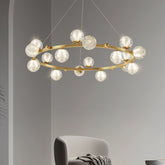

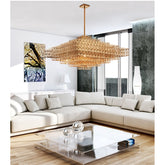

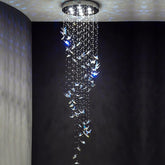



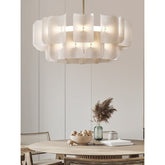

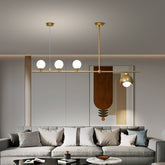

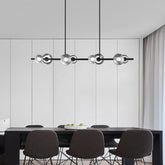



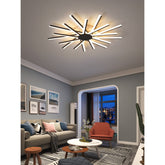

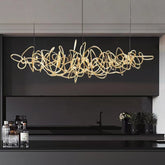


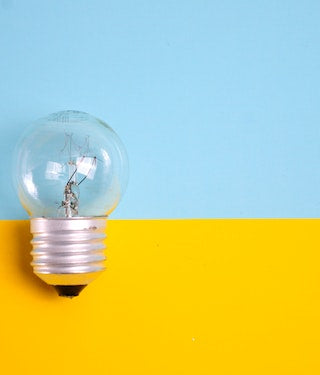

2 Comments
bjommd
9carh5